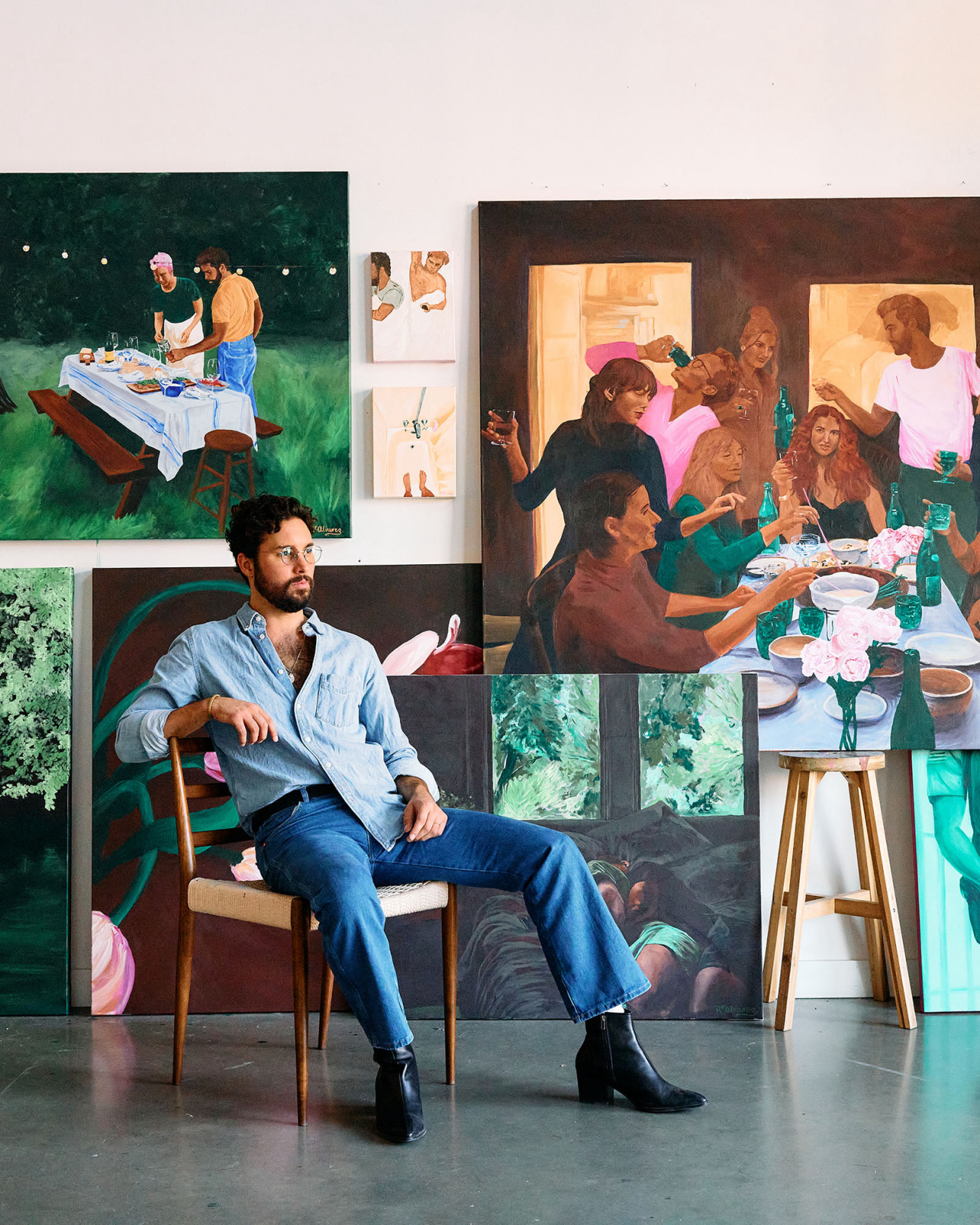
For RF. Alvarez, the definition of home is in ceaseless transformation. The 35-year-old painter left Texas at 18 with the firm intention of never returning, but it was back home on a Christmas visit in 2013 that he met the man who would eventually be his husband. The couple’s Austin dwelling, where the smell of wildflowers mingles with the sound of crickets, inspired his most recent paintings. “If you want to know yourself, you should leave where you are from,” he tells CULTURED. “The longer the branches, the deeper the roots.”
Eight paintings (all 2023) from his upcoming New York solo debut, "Eros," at Soho’s Alanna Miller gallery, visualize his journey establishing a life—specifically, an openly queer one—in Texas after stints in Connecticut, New York, and Los Angeles. Fittingly, the show’s central theme is perhaps the Western canon’s most famous homecoming: that of Odysseus. According to Alvarez, the Odyssey epic “tells a compelling story of constructing a lived experience … through his struggle to return to where he is from.”
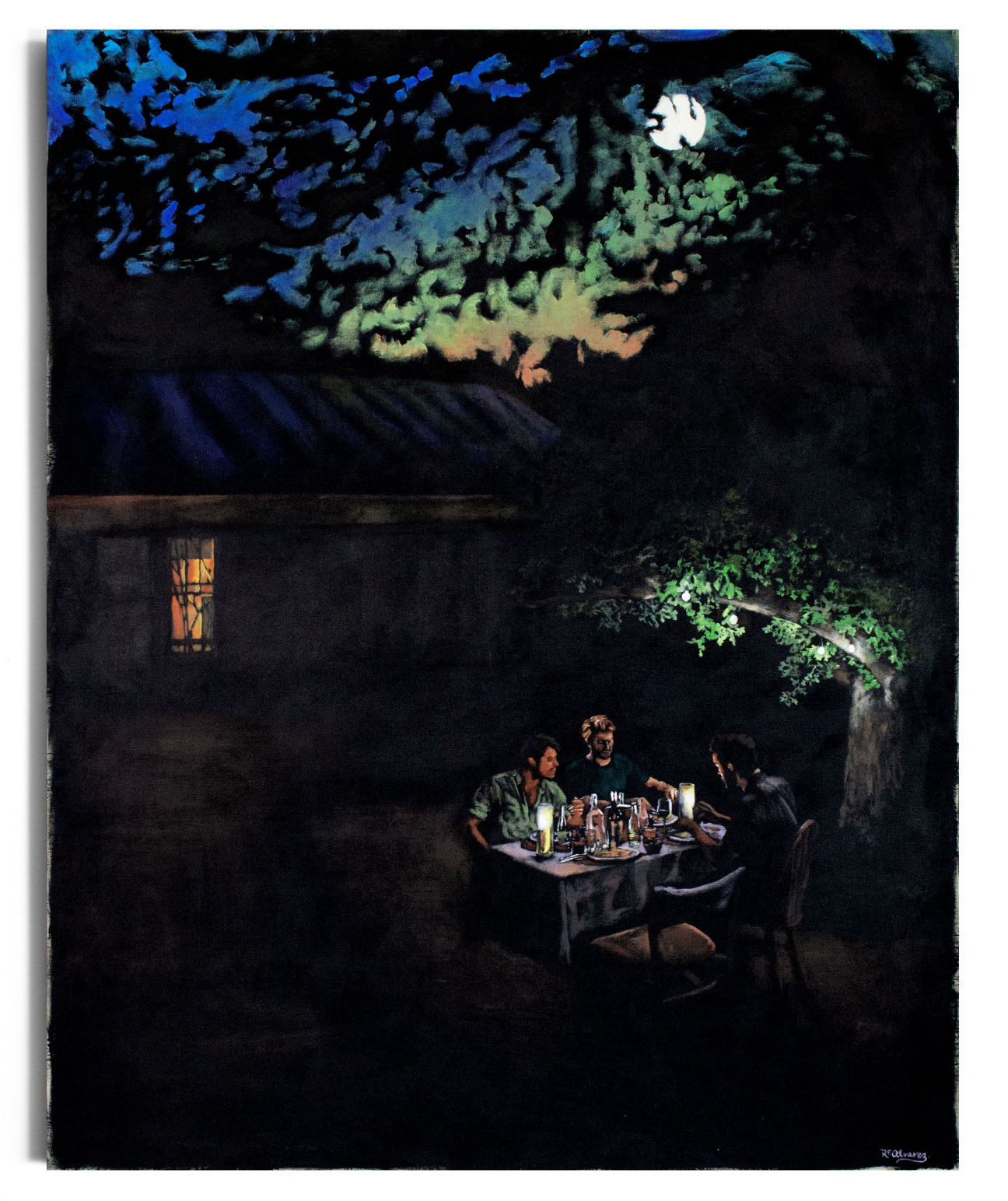
Like the expansive notion of family within queer communities, home is a concept that brims with possibility for Alvarez. Family and home coalesce in the artist’s moody paintings of camaraderie and reverie. Images of bacchanalian dinner tables circled by friends are diaristic, even cinematic, while more intimate moments between the artist and his husband invite the viewer into the quiet corners of their East Austin home.
“When I started painting four years ago, I realized my work relies on three pillars of queer experience, which are indulgence, impermanence, and belonging,” says Alvarez. “Soaking up life’s different moments,” he explains, has been a practice of self-realization. Given queer history’s entanglement with loss and erasure, a commitment to joy and contemplation has been key to Alvarez’s work. His narratives are personal yet penetrable.
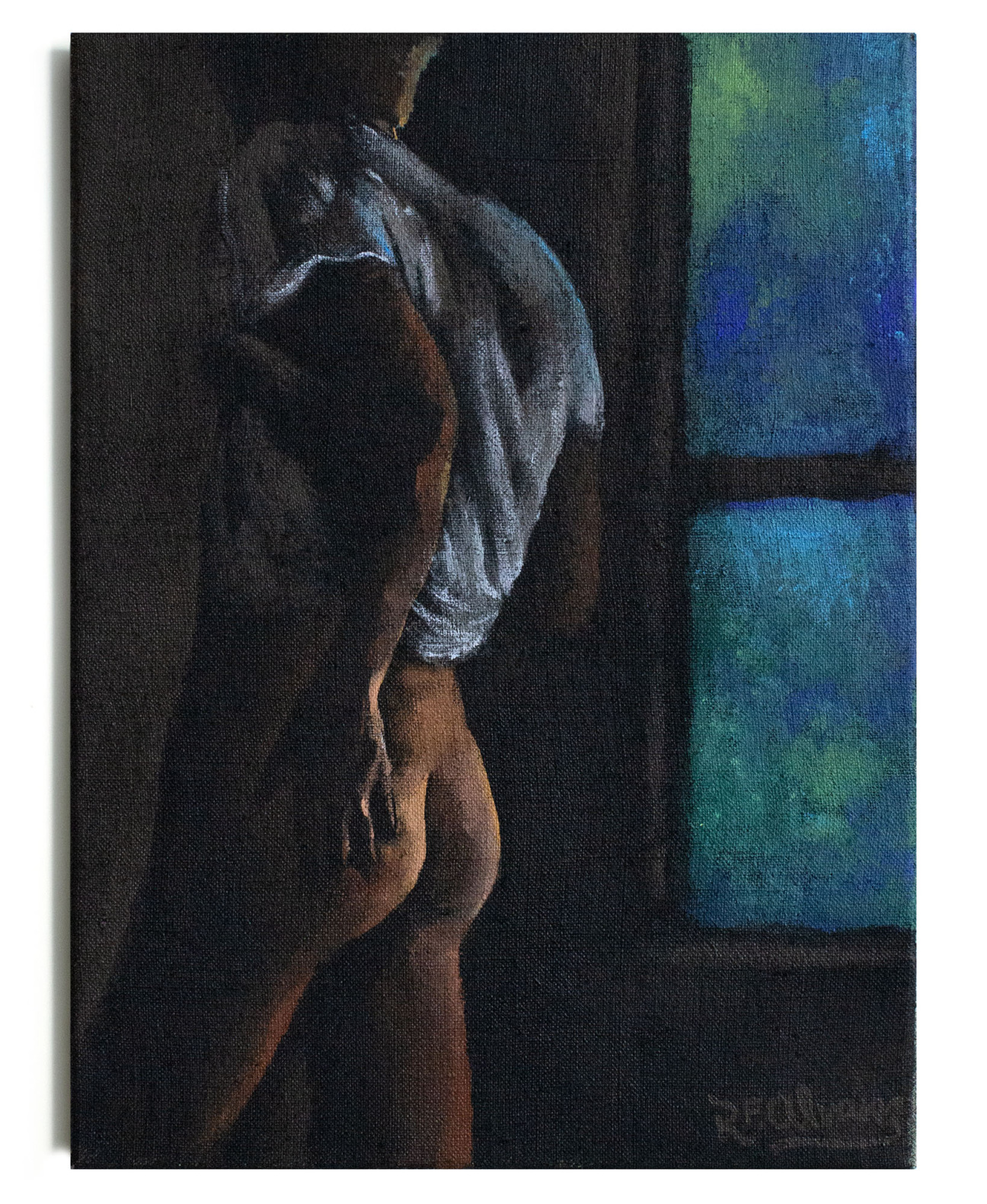
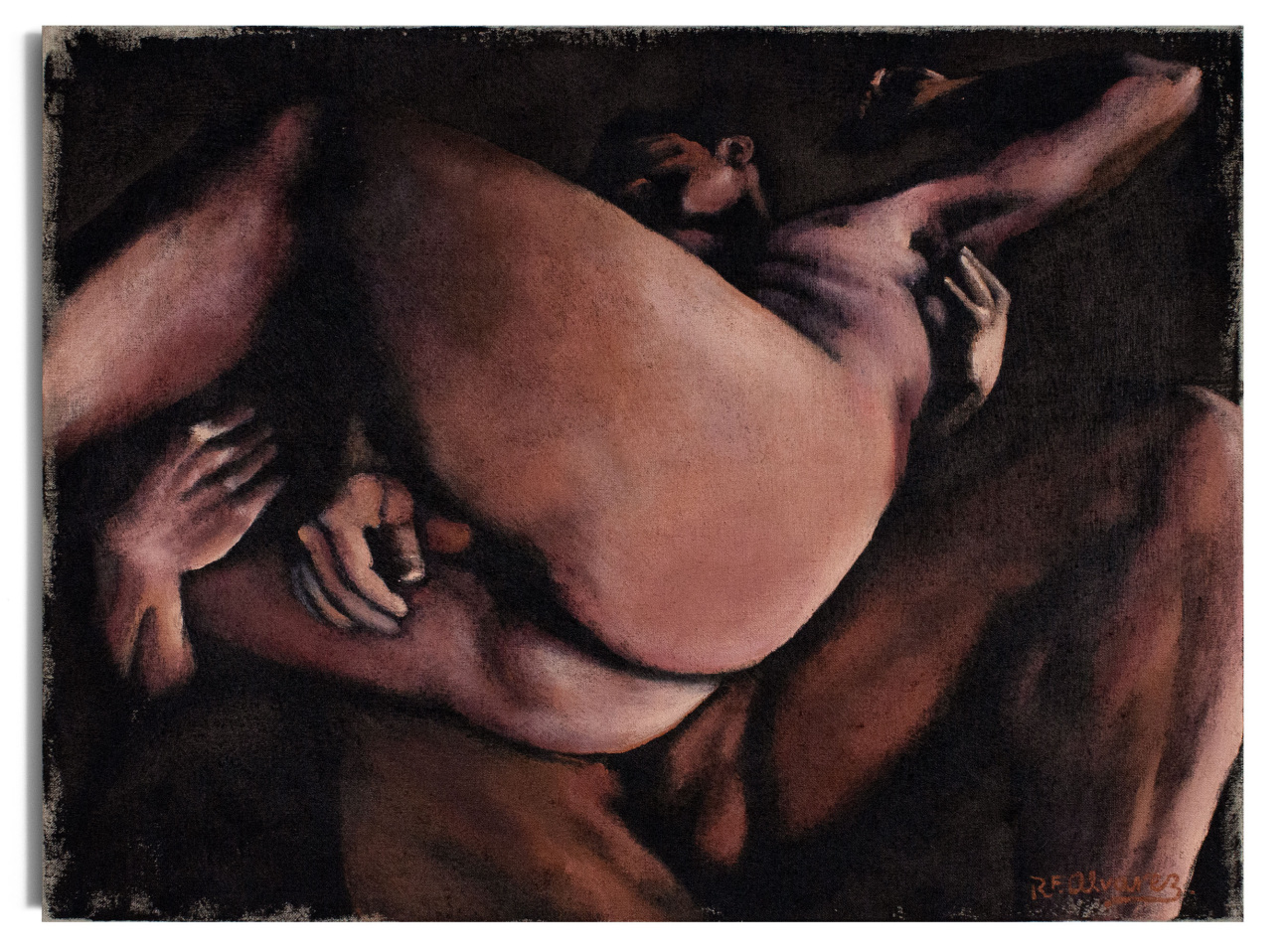
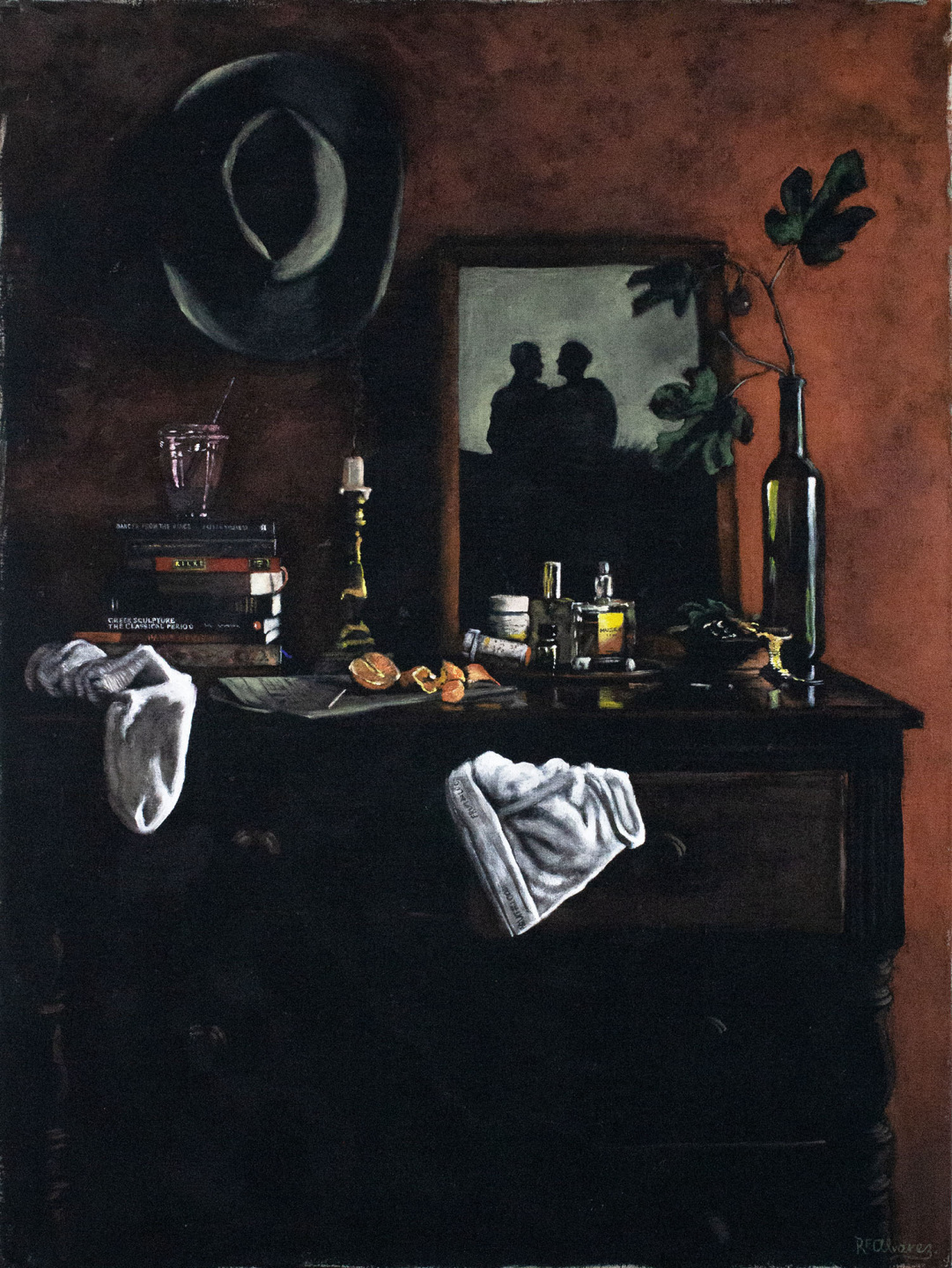
The body floats in and out of the San Antonio-born artist’s images. He Wakes Before Me shows a man’s bare buttocks awash in light from a window, while Eros depicts two nudes entangled, flirting between wrestling and intercourse. Other compositions suggest a body, or bodies, just out of frame. Galley to Ithaca shows a vanity decorated with remnants of the mundane gay home: a white brief hangs from a drawer and a similarly-colored sock is draped over a wooden surface occupied by books, a candle holder, a couple’s picture, a vase, and a popper bottle.
Alvarez’s lexicon references both Old Masters’s depictions of indulgence and his own family’s heritage. Born to a sixth-generation Texan mother and a Mexican immigrant father, he infuses his paintings with a questioning of Southern machismo. “A lot of my work is about the fallacy of the cowboy figure and its paper-thin vulnerability,” he says. “The performance of a masculine image weighs so much on men who try to hold back their emotions.”
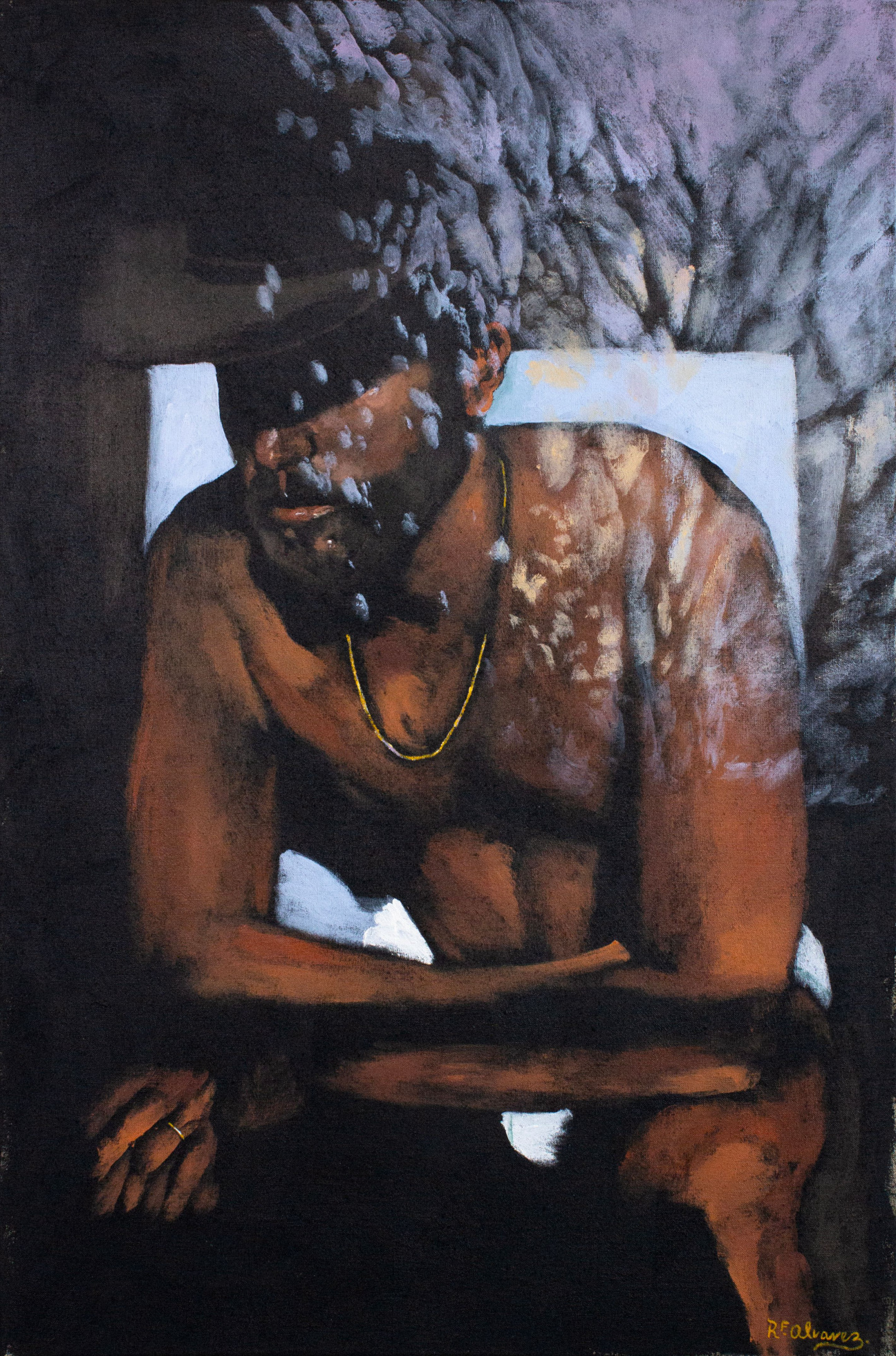
The show’s most personal painting, Self Portrait with Grandfather’s Hat, shows Alvarez exploring his relationship with his ranch-owner grandfather. Donning nothing but white underwear and the eponymous hat, the artist depicts himself as contemplative and aloof. The ghostly reflection of a tree over his chest hints at the nature outside, as well as his own roots, while the wedding ring on his left hand expresses the possibility of queer domesticity. A generational tie as well as those of identities and places layer the painting with a belief in multitudes which has in fact been a guiding light in Alvarez’s work and life.
The artist’s raw canvases and linen surfaces are imbued with nocturnal coloration. Shade-washed skins, bedrooms illuminated by the moon, and late-evening feasts devoured under candlelight all suggest the mystery of the unseen. “Interiors have been a safe space for queer people to express their true selves, and I like this idea of something blooming in the shadows or full darkness,” Alvarez muses. “I am interested in painters like Caravaggio who pull the light out of their works to pinpoint little moments.”
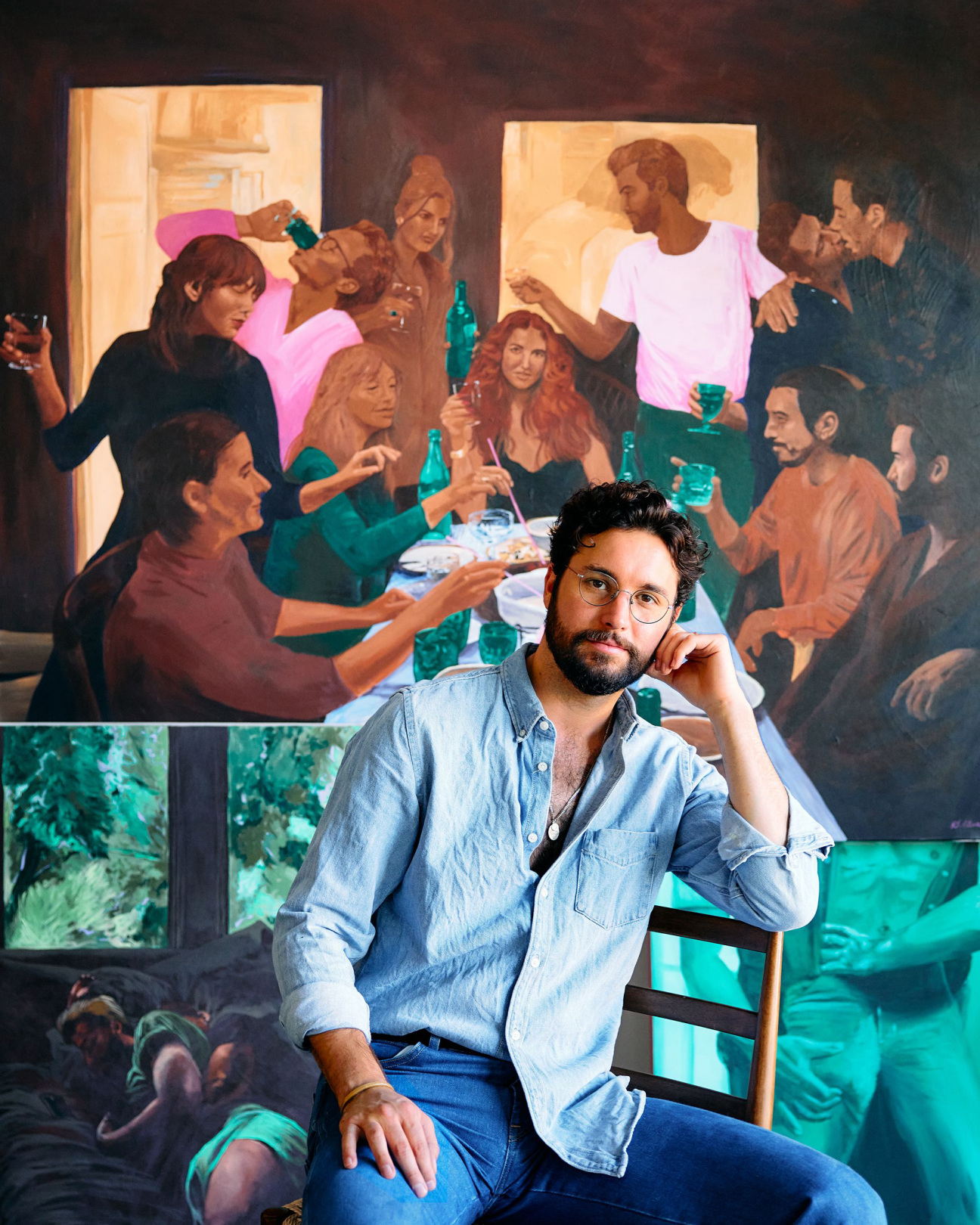
Alvarez’s paintings—mostly based on memories and, occasionally, photographs—are a duet between remembrance and letting go. The journal he keeps at his studio provides him with material from the past, from yesterday to several years ago. “Finding those moments again connects me with the idea of impermanence because so much of what I am doing is to hold onto memories,” he explains.
As fleeting as the Texas breeze blowing into the bedroom where he and his husband just had sex, or as instrumental as the day he decided to move back to his home state, memories and moments seep into Alvarez’s paintings. “These delicate and fleeting instances,” he says, “are what I want to bottle up.”
"Eros" will be on view from May 12 through June 24, 2023 at Alanna Miller in New York.










 in your life?
in your life?

